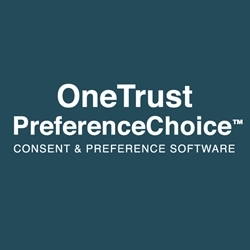Global privacy regulations, the death of the third-party cookie, ad-blocking: marketers have entered a new era of data privacy.
The future of marketing is going to look very different from what the industry has grown accustomed to over the past decade.
Yes, the industry is forcing you to move away from the use of third-party data, but there's something better: data that comes straight from your customers.
Such data is not only higher-quality but also more abundant, and it takes the guesswork out of identifying your target audiences. It comes from trust, not third-party cookies.
It's called zero-party data.
Zero-, First-, Second-, and Third-Party Data: What's the Difference?
Data organizations collect four types of data for use in marketing efforts. Although they all have one thing in common—the collection and housing of peoples' personal information for targeted campaigns—they differ in the way the data is collected.
Zero-party data is often considered a subset of first-party data. It's directly provided by consumers, usually addressing communication preferences. Other first-party data, though it also originates directly from consumers, is collected to support a transaction, or as a support or service requirement.
Second-party data usually refers to someone else's first-party data—purchasing data from another organization, for example, or shared data through a partnership.
Third-party data is collected from a variety of sources: behavior, advertising, browsing, etc. Much of the time, that data is collected from third-party cookie tracking—a topic causing controversy for industry professionals.
The Movement Toward Zero-Party Data
As consumers have become more aware of cookie tracking, they've become less comfortable with the idea of being targeted. As such, global governments and big tech are working to "kill" third-party cookie tracking.
Third-party data is collected from every source except (directly) customers. It comes from credit scores, cookies, and click trials; and, as a result, it is both poorer quality and less effective than zero- and first-party data.
Third-party data has created a massive knowledge gap between marketing professionals and their customers. Many marketers might feel their audience trusts them with their data, but only 28% of consumers know which companies are best protecting their personal information, studies show.
That's where zero-party data comes into play. The collection of zero-party data presents a real opportunity for companies to run more effective campaigns by collecting data from the source and simultaneously building trust and transparency within their audience.
An Opportunity to Build Trust
Many marketers, advertisers, and publishers are caught between using old methods of data collection and figuring out where to go from here. There's plenty of uncertainty. But if one thing holds true about marketing, it's that it's an industry full of resilience and creativity.
Here are three ways the collection of zero-party data benefits both you and your customers:
- Trust through transparency. The most significant benefit of zero-party data is that it comes directly from the source: your customers. And if you think they'll be hesitant to hand it over, here's some good news: 79% of consumers are willing to share their data if there's a clear benefit for them. If you're transparent about why you're collecting the data, your audience will likely feel comfortable providing it.
- Better-quality data—and more of it. No longer are you purchasing data from a third party who may or may not have kept the data clean. Hard bounces, poor targeting, and money flushed down the toilet are risks of third-party data you'll be able to avoid. And because you're asking customers for it directly, you'll have the ability to ask for more data than you might have if you'd purchased it. Want a customer's T-shirt size or favorite color? Just ask.
- More-effective campaigns. As a corollary to the previous point, collecting zero-party data allows you to increase personalized campaigns across all stages of the customer buyer journey. Information such as purchase intentions and preferences will improve your personalization strategy and help build a more accurate picture of who exactly your customer is.
The benefits of zero-party data are clear: Capturing your audiences' intentions, interests, motivations, and preferences at scale allows you to create a truly personalized experience for each customer. And being transparent about your intentions with data tells customers you're a company they can trust.
To begin collecting zero-party data, your company will need to develop a preference management strategy and create a trust center where customers can update their preferences and opt into data collection. Comprehensive solutions are available for marketers and publishers to manage the consent, preferences, and first-party data of their customers.
Learn more at www.preferencechoice.com.




